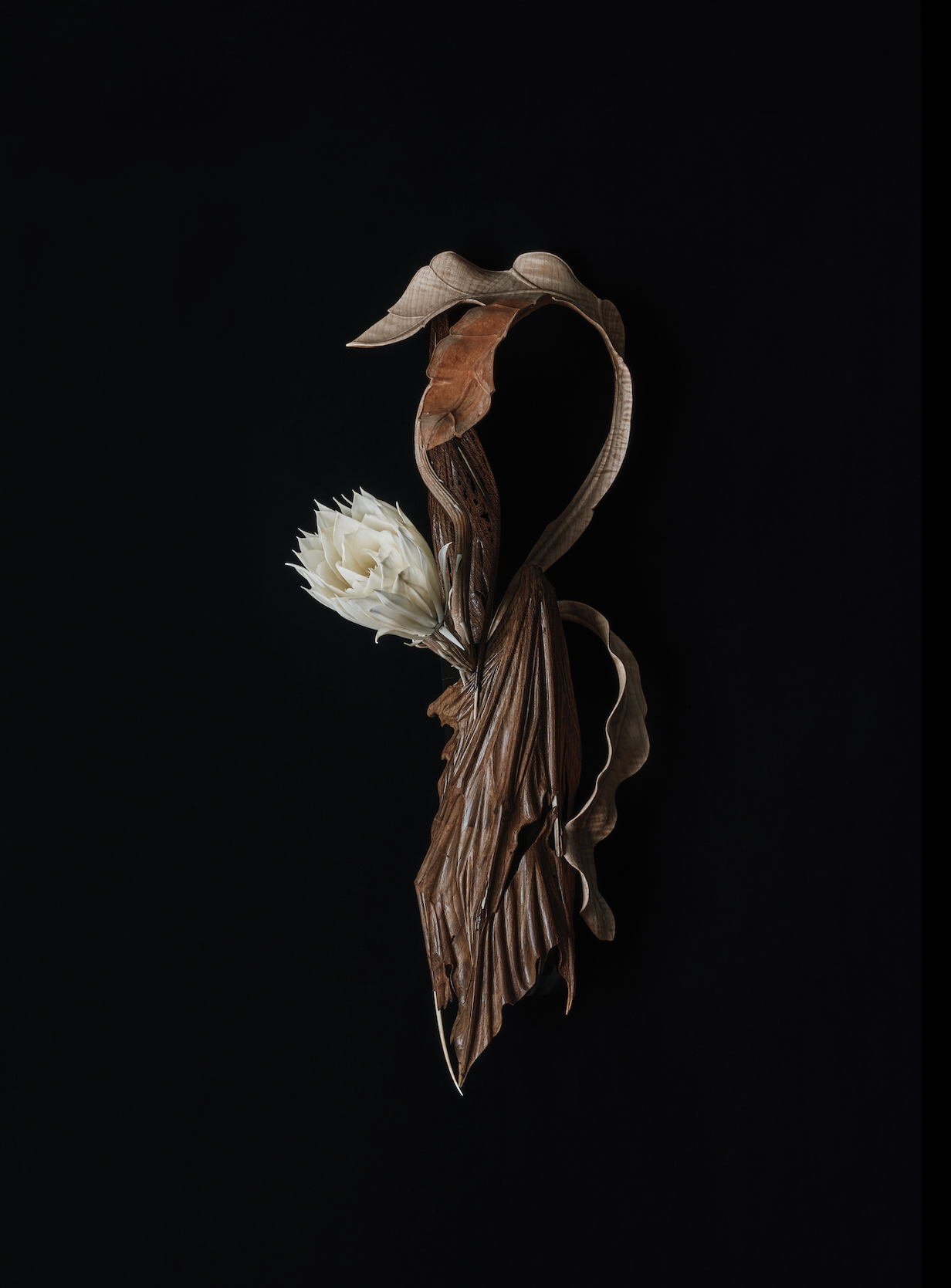彫刻
Sculpture

月光 大竹亮峯
自然をどこまでも探求し続ける木彫家大竹亮峯。2017 年にこの月下美人の前身となる《竹の水仙》を発表し、彫刻物の花を開かせて、人々を驚かせた。大竹はこの作品を左甚五郎が活躍されたとされる江戸時代初期を想定し、その時代に手に入る材から発想し、花を咲かせた。 そんな彼が、今回初めて現代的な素材であるチタン合金を部分的に作品に取り入れた。チタンは優れた対腐食性に加えて、軽くて強靭な特性を有する。大竹がこの素材を取り入れた理由は明確である。この月下美人を何百年先にも花を咲かせる為である。これは彼の死後を見据えた、時を超える挑戦なのである。そしてもう一つ、大竹はこの時代の花を咲かせたかったのだ。自然素材に加え、現代科学と向き合う事によって、この時代の最善の彫刻の姿を模索する。その必要性をこの時代に生まれた彫刻家として感じているのだ。 本作はまるで本当に生きているかの様に環境の微妙な変化によって咲き方を変える。皆さまには静寂の中、この花の開花を見守る時間を楽しんで頂きたい。
Moonlight by Ryoho Otake
Wood sculptor Ryoho Otake continues his endless quest for nature. In 2017, he presented Bamboo Daffodil, the precursor to this work, Queen of the Night, and surprised the viewers by blooming a sculptural flower. Otake envisioned the early Edo period (1603-1868), when Hidari Jingoro was said to have been playing an active role, and used the materials only available during that period. This is how he made the flower bloom in his previous work. For the first time, he partially used a contemporary material, titanium alloy, in this work. In addition to its excellent corrosion resistance, titanium is light and strong. The reason he chose this material is clear — to keep this queen of the night in bloom for hundreds of years to come. This is a timeless challenge looking towards the future even after his death. And one more thing — Otake wanted to make the flower of this era bloom. He explored the best form of sculpture suitable for this era through modern science, in addition to using natural materials. As a sculptor born of this age, he feels the need to do so. This work changes the way it blooms depending on subtle changes in the environment — as if it were really alive. Everyone is invited to enjoy their time observing this flower bloom in silence.
素材:楓、榧、神代欅、鹿角、チタン合金
Material:maple tree, Japanese Torreya, Jindai keyaki (zelkova), deer horn, titanium alloy
H63cm

素材:楓、榧、神代欅、鹿角、チタン合金
Material:maple tree, Japanese Torreya, Jindai keyaki (zelkova), deer horn, titanium alloy
H63cm

